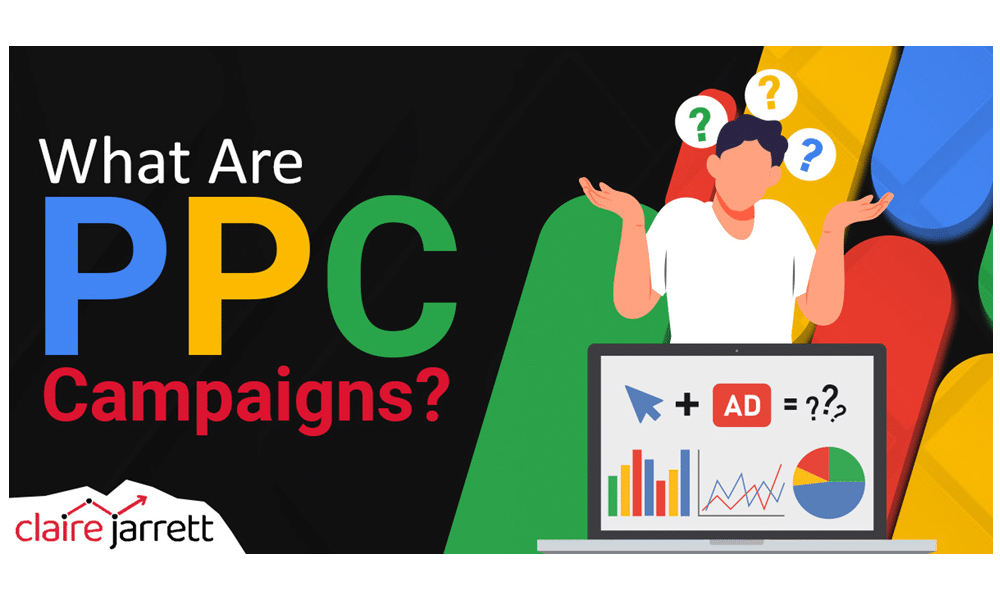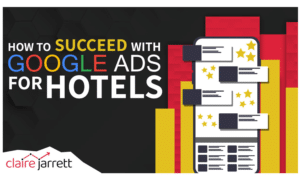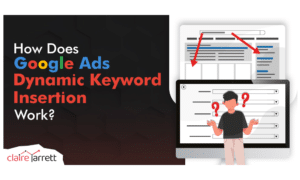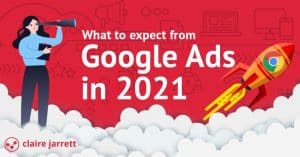What Are PPC Campaigns?

Last Updated on: 30th September 2024, 01:29 pm
In my blog, I often talk about subjects like key PPC tools for your campaigns, advanced strategies for maximising your ads’ effectiveness, and more. But today, I’d like to talk about the heart of what I do: PPC (Pay-Per-Click) campaigns.
I’ve chosen Google Ads as my career for a good reason: it offers the biggest advertising platform in the market with unparalleled ROI. As a result, my services have helped thousands of business owners build predictable and dependable sales funnels.
Read on to learn what PPC campaigns are, why I advise most businesses to launch them, and a few quick best practices to help you get started profitably.
First Things First: What Are PPC Campaigns?
Pay-Per-Click (PPC) campaigns are called “pay-per-click” because you’re paying for each click on your ad, rather than paying a flat rate for the ad space or a cost per thousand views (CPM or Cost Per Mille).
Google Ads is the most popular PPC platform and for a good reason. Google, being the go-to search engine for billions of people every day, gives you the best opportunity to reach your ideal leads when they’re looking for solutions like yours.
Those ad results at the top of your search (the “Sponsored” ones), are PPC ads. However, some ads can be displayed as banners when searchers visit websites online, others show up as YouTube ads, and so on.
Other platforms like Facebook and LinkedIn Ads also offer PPC advertising. For example, LinkedIn Ads are particularly effective for B2B audiences. However, they can be more costly than others.
However, if you’re new to the PPC world, you’ll want to start with search campaigns. They target intent, only displaying your ads when your ideal customers are looking up the query you are targeting.
If you set them up correctly, you can earn $8 for every $1 you spend. And once you master them (or hire a PPC expert who has mastered them), your returns only increase.
Why Most Businesses Should Invest In PPC Campaigns
Google Ads are a great move for most businesses, but let’s break it down a bit. I say “most businesses” because there are a couple of things to consider if you’d like to go down this path.
1) Ask yourself if you’ve got the budget. The minimum recommended daily budget is $10, which adds up to $300 per month. However, the exact costs depend on your industry and competition. So before diving in, I want you to certify your wallet is on board. And no, a small budget doesn’t necessarily mean a low ROI, especially if you learn from a Google Ads coach, but you should be prepared for a long-term investment and testing (preferably at least $1,000 if you’re a small business).
2) Ask yourself how well you know your ideal customers. If you’ve got a solid understanding, great! Google Ads can be a powerhouse. But if you’re a SaaS startup still trying to understand who your best customers are, it’s best to use the budget to gather data, monitor conversions, and A/B test your campaigns thoroughly.
Now, if you’ve already reached business maturity and have the budget, let’s talk about the specific benefits of PPC campaigns!
Measure Your Success
Instead of waiting to see results, as you would with traditional campaigns, PPC campaigns almost instantly show you what you’re working with. You can adjust your budget, targeting, and content as you go, based on KPIs like CTR, Conversion Rates, and CPC.
Keep Your Costs Under Control
With PPC, you only pay when someone clicks on your ad. You maintain full control when it comes to adjusting your budget or pulling the plug on your campaigns. If your ads are highly relevant, you’ll see reduced costs for your Facebook Ads or Google Ads campaigns.
Plus, if you set up conversion tracking right away, you’ll be able to focus your bidding on the most profitable leads.
PPC Campaigns Offer Quick Start with Minimal Hurdles
Unlike the often time-consuming SEO, PPC campaigns can offer a faster lane to results. The only two obstacles are money and knowledge, and since you’re on my blog, knowledge will be easy to come by!
Once you launch your PPC campaign, you can start getting traffic within minutes.
Practical Targeting Options
PPC offers precise targeting, so you reach specific audiences based on factors like location, demographics, and interests. This way, your ads pop up in front of the right audience at the right moment, even if you’re dealing with niche B2B audiences in Google Ads.
PPC Campaign Best Practices
Your strategy shouldn’t be as simple as tossing money at ads and hoping one of them will “stick.” Instead, follow the practices I’ve implemented in thousands of profitable campaigns across the years:
Set a Realistic Budget
My clients often ask me questions like, “What should my Google Ads budget be?” or “Can I get good results with a small budget?”
I’ve said it once and I’ll say it again: a small budget doesn’t necessarily mean a low ROI.
That said, your budget should hit the sweet spot between the price you can comfortably afford and the minimum suggested budget for your business size. Above all, it should align with your business goals.
You can use the prices mentioned earlier as anchors for your initial investment. Don’t forget that you can always adjust as needed, as well as use creative strategies. For example, one thing I often recommend to consultants using LinkedIn Ads to get the best leads is remarketing with budgets as low as $600-1100/month!
Keep an Eye on Your Competitors
Regularly check how your competitors are setting up their ad strategies. Study the keywords they target and the language they use in their ad copy to find opportunities for your business to stand out.
For example, if you’re an accounting firm advertising on LinkedIn Ads, your competitor analysis might uncover that they’re not offering whitepapers – but you have the data to create one. Why not use that for a lead generation campaign different to what your competitors are doing?
I like to use SpyFu for a quick overview of all the campaigns my competitors are running. And if you’re also doing SEO, it can help with your keyword targeting.
Test Your PPC Campaigns Methodically
When testing your ads, change one element at a time. It could be the ad copy, headline, or visuals. This way, you can pinpoint what works and what doesn’t for optimal results.
For example, if you’re in eCommerce, you could try using the same images but showcasing different colours and styles of the product.
Align Your Offers with Buyer Journey
If you haven’t mapped out your customers’ buyer journey, do it now. You want to identify the exact moment when they’re most susceptible to your offer, so you can create a PPC campaign that targets them right then.
Your PPC Ad Copy Needs to Be Engaging
Use attention-grabbing headlines, clear messaging, and Calls to Action (CTAs) to engage your audience. In this article, I teach you all about creating amazing ad copy!
Regularly Review Your PPC Campaigns
PPC campaigns aren’t a set-it-and-forget-it affair. You have to keep an eye on them and optimise as you learn more. Plus, reviewing regularly will help you identify the most profitable keywords vs the ones not bringing in valuable leads.
Ready to See How PPC Campaigns Can Take Your Marketing to the Next Level?
Creating effective Google Ads campaigns takes time, care, and a healthy dose of trial and error. Fortunately, you don’t have to go through the trial and error process – not with my advice.
If you’re ready to get started, get your Google Ads blueprint: my best-selling book that walks you through the practical aspects of setting up a profitable PPC campaign in 7 rapid steps.
If you’d prefer it done for you, I’ve been helping businesses grow with Google Ads since 2008, handling over £4 million in advertising and bringing in 15,000+ customers for my clients. For personalised advice, contact me.
Let’s dive in!




![Responsive Search Ads vs Dynamic Search Ads: Which Should You Use? [Updated in 2025]](https://a4x3f5i9.delivery.rocketcdn.me/wp-content/uploads/2022/11/responsive-search-ads-vs-dynamic-search-ads-300x180.jpg)

